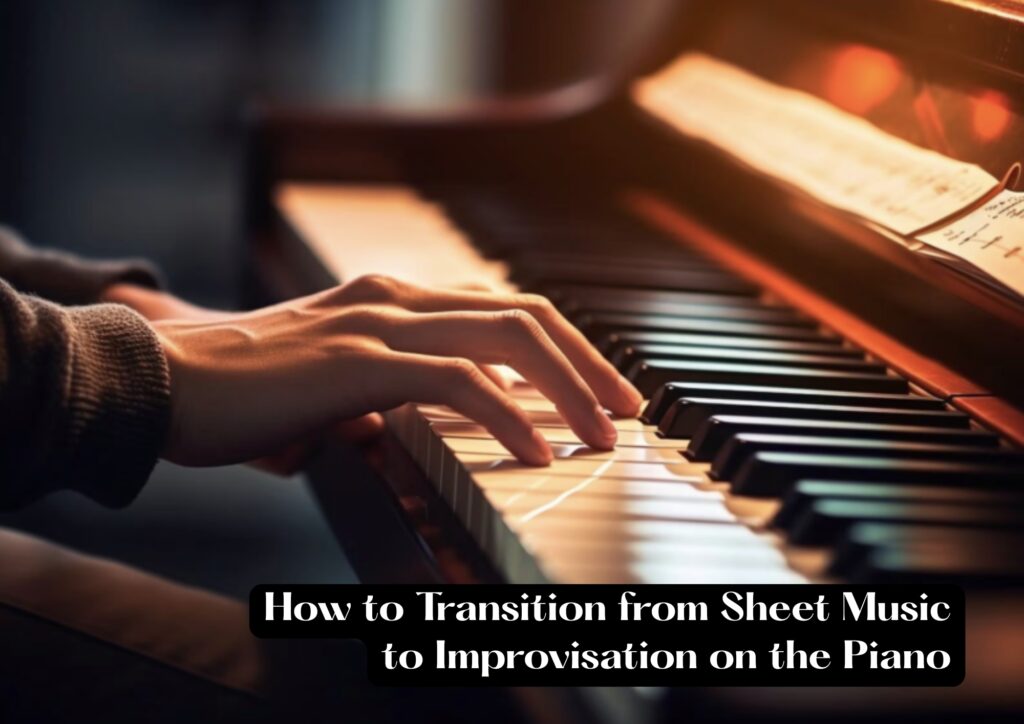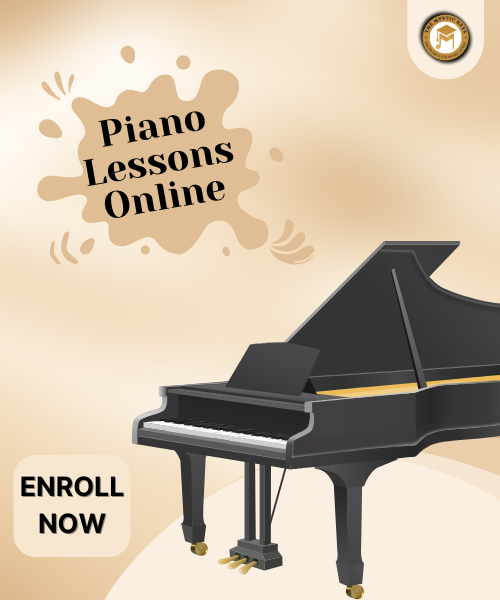How to Transition from Sheet Music to Improvisation on the Piano?
For many pianists, especially those trained in classical or formal settings, playing from sheet music is a foundational skill. It teaches accuracy, discipline, and an understanding of musical notation. However, there comes a time when many pianists feel the urge to break free from the page and explore the spontaneous, creative world of improvisation. Making the transition from sheet music to improvisation marks an exciting turning point — one that opens up new avenues for personal expression and musical growth.
Improvisation is the art of creating music in the moment without relying on written notes. It’s a skill that allows pianists to express emotions more freely, develop a personal musical voice, and engage more deeply with their instrument. But how does one transition from the structured world of sheet music to the liberating flow of improvisation?
In this comprehensive guide, we’ll explore the mindset changes, technical foundations, and step-by-step methods that will help you confidently make the leap from reading notes to creating your own melodies and harmonies on the piano.

Understand the Difference | Reading vs. Creating
Before diving into practice techniques, it’s important to first understand the mental and musical shift involved in the transition from sheet music to improvisation. This shift requires more than just a new set of skills — it demands a new mindset.
Playing sheet music is largely about interpretation. You’re reading someone else’s musical ideas and bringing them to life as faithfully as possible, following precise notations, dynamics, and rhythms. It’s a structured approach that emphasizes accuracy and adherence to a written score.
Improvisation, on the other hand, is about creation. It invites you to spontaneously invent music based on your own understanding of harmony, rhythm, and melody. There’s no right or wrong note in the traditional sense — only choices that lead you in different musical directions.
Bridging this gap means developing a new relationship with your instrument. You move from being a performer of composed works to becoming a composer in the moment. Making this mental shift is essential. Improvisation requires you to trust your ear, to explore freely, and to view “mistakes” not as errors, but as opportunities for growth and discovery.

Build a Strong Foundation in Music Theory
Improvisation is not just random playing; it’s guided freedom rooted in musical understanding. To confidently navigate this freedom, a solid grasp of music theory is essential. It provides the framework that helps you recognize what notes work well together and why. If you’re used to relying heavily on sheet music, deepening your theoretical knowledge can make the transition to improvisation much smoother.
Begin by revisiting the fundamental building blocks of music:
Scales – Start with major and minor scales, then explore pentatonic and blues scales. These patterns form the foundation for crafting melodic lines during improvisation.
Chords and Harmony– Learn to identify common chords such as triads and seventh chords. Understanding how these chords function within a key and progress from one to another will help you harmonize your improvisations.
Intervals – Developing an ear for the distance between notes enables you to build more expressive and interesting melodies.
Rhythm – Finally, rhythm is the heartbeat of any improvisation. Becoming comfortable with a variety of rhythmic patterns allows you to add energy, surprise, and emotion to your playing.
If your training has primarily focused on reading notation, take time to strengthen these theory basics. You don’t need to be a scholar, but having a practical, working knowledge of these concepts will give you the confidence and clarity needed to improvise with intention and creativity.

Start Small | Improvise Within a Simple Framework
Jumping straight into free-form improvisation can feel overwhelming, especially for pianists who are used to the structure that sheet music provides. To ease the transition from sheet music, it’s helpful to begin with a simple framework. Think of it as training wheels for improvisation—a way to explore creativity within safe boundaries.
Start with a Single Scale: Begin by choosing one scale, such as C major, and limit your improvisation to just those notes. This keeps things simple and helps you internalize the sound and feel of a key without distractions.
Add a Static Chord Foundation: Once you’re comfortable with the scale, anchor your improvisation with a single chord. For instance, play a C major chord repeatedly in your left hand while exploring melodic ideas in your right. This adds harmonic context and makes your improvisation feel more grounded.
Narrow Your Note Choices: To further reduce pressure, try restricting yourself to just 3 to 5 notes from the scale. This limitation encourages you to get creative with rhythm, phrasing, and dynamics, rather than focusing on which notes to play next.
By working within this structured approach, you create a safe and manageable path into the world of improvisation. Over time, this builds confidence and trains your ear to recognize musical patterns—essential skills for improvising freely and expressively.

Practice Call and Response Exercises
Call and response is a classic method used in jazz and blues to develop improvisation skills:
Play a Short Phrase (“Call”): You can play this phrase or even sing it.
Answer it with a Different Phrase (“Response”): This phrase should complement or contrast with the call.
This exercise trains your ear and your fingers to listen actively and react creatively. It also mirrors natural musical conversations that happen in improvisation.

Transcribe and Analyze Improvised Solos
Listening to and learning from experienced improvisers is an invaluable step in your journey from sheet music to spontaneity. Rather than relying solely on theory, immersing yourself in real-world examples helps you understand how musical ideas come to life. Start by choosing solos from jazz, blues, gospel, or even pop piano players you admire.
Begin with active listening, focusing on the phrasing, rhythmic variations, and note choices that give the solo its character. Next, transcribe the solo — either by writing it down or learning it by ear — to absorb the player’s melodic instincts. Finally, analyze what you’ve transcribed: identify the scales being used, recognize recurring motifs, spot chord tones, and observe how rhythm drives expression.
This deep dive into authentic improvisation not only strengthens your musical intuition but also helps internalize idiomatic language, laying the foundation for developing your own improvisational voice.

Use Backing Tracks and Play-Alongs
Backing tracks provide harmonic and rhythmic support, effectively simulating the experience of playing with a band. This added layer makes improvisation not only more enjoyable but also more practical for developing real-world skills. To get started, begin by choosing tracks with simple chord progressions, which allow you to focus on creating melodies without feeling overwhelmed. Once comfortable, gradually increase the complexity by improvising over multiple chords, which challenges your ability to navigate changing harmonies smoothly. As you progress, don’t hesitate to experiment with different musical styles — whether it’s blues, jazz, gospel, or pop — to broaden your improvisational vocabulary. By consistently playing along with backing tracks, you’ll naturally develop your timing, phrasing, and overall confidence at the piano.

Experiment with Rhythmic Variations
Improvisation is not just about which notes you play, but also when and how you play them. Rhythm plays a crucial role in shaping your musical expression, and even the simplest melodic ideas can come alive through rhythmic variation. To explore this, try experimenting with a few key techniques:
-
Syncopation: Shift the emphasis off the main beats to create unexpected accents and a sense of groove.
-
Rhythmic motifs: Develop short, repeated rhythmic patterns that give your improvisation a sense of structure and identity.
-
Pauses and rests: Don’t underestimate the power of silence — well-placed breaks can add tension, breath, and drama to your phrases.
As you explore these rhythmic tools, you’ll find your improvisations becoming not only more dynamic but also more emotionally compelling and musically rich.

Embrace Mistakes and Keep a Practice Journal
Improvising is a process of trial and error, and embracing that process is key to your growth as a pianist. Mistakes aren’t setbacks—they’re stepping stones that help refine your musical instincts. One effective way to make the most of your improvisation sessions is to record yourself regularly. Listening back allows you to identify recurring ideas you enjoy, spot areas for improvement, and track your progress over time.
In addition to recording, consider keeping a practice journal. Writing down what worked, what didn’t, and how you felt during each session can provide valuable insights and keep you motivated. As you continue exploring, don’t overlook the importance of celebrating small milestones—whether it’s discovering a catchy melodic phrase, landing a satisfying chord progression, or experimenting with a fresh rhythmic pattern.
These small breakthroughs add up. With each session, your vocabulary of musical ideas will expand naturally, building a more confident and intuitive approach to improvisation.

Incorporate Improvisation Into Your Regular Practice
Don’t treat improvisation as a separate, occasional skill—rather, make it an integral part of your daily piano practice. For example, you can begin your warm-up sessions by freely improvising on scales, which helps loosen your fingers and spark creativity right from the start. Then, instead of jumping straight into sight-reading, try taking short improvisation breaks between pieces to keep your mind engaged and flexible. Another great way to incorporate improvisation is by experimenting with endings or introductions to the pieces you’re currently learning, adding your personal touch and building confidence. Beyond solo practice, regularly jamming with friends or other musicians provides a fun and dynamic environment to apply your improvisational skills in real time. By weaving improvisation naturally throughout your routine like this, you build fluency and ease that will transform your playing over time.

Explore Different Genres and Styles
Each musical style has its own improvisational language and techniques. Exploring different genres broadens your creativity and versatility.
Jazz uses complex chords, blue notes, and swing rhythms. Blues focuses on emotional expression with simple pentatonic scales. Classical music highlights ornamentation and variations. Gospel and worship feature rich harmonies and soulful melodies.
Trying new styles challenges you to think differently and grow as a musician. It also helps you find what truly resonates with your personal taste. Practice regularly to blend these influences smoothly. Listen closely to great improvisers for inspiration. Over time, you’ll build a sound that is uniquely yours.
Diving into these styles helps you develop a unique improvisational voice that reflects your musical identity.

Conclusion | From Notes to Expression
The transition from sheet music to improvisation is a journey that blends knowledge, creativity, and courage. By understanding music theory, practicing systematically, listening to great improvisers, and embracing experimentation, you’ll move beyond reading notes to truly making music on your own terms.
Improvisation on the piano unlocks a world where you become the composer and performer simultaneously. It’s not just about playing the right notes, but about expressing your emotions, telling stories, and connecting with listeners on a deeper level.
So, take that first step today — play a simple scale, try a few spontaneous melodies, and enjoy the thrill of creating music that’s uniquely yours. And if you’re ready to deepen your skills and gain guided support, join our Piano Lessons Online at The Mystic Keys — where creativity and technique go hand in hand.
Related Blogs
The Science of Sight-Reading: How to Read Piano Music Faster
Sight-reading is one of the most essential skills for any pianist. It allows you to play new music on the spot without having to memorize it first. But for many learners, it’s a challenging task that feels slow and frustrating.
How to Develop Finger Independence for Smooth Piano Playing
Developing finger independence is a cornerstone of proficient piano playing. It enables pianists to execute complex passages with precision, expressiveness, and fluidity.
Mastering Piano – Finger Placement Basics from The Mystic Keys
At The Mystic Keys, we emphasize the importance of proper finger placement as the foundation for any pianist’s journey. Whether you’re just starting or refining your technique, mastering finger placement will not only improve your speed and precision but also prevent strain and fatigue.








